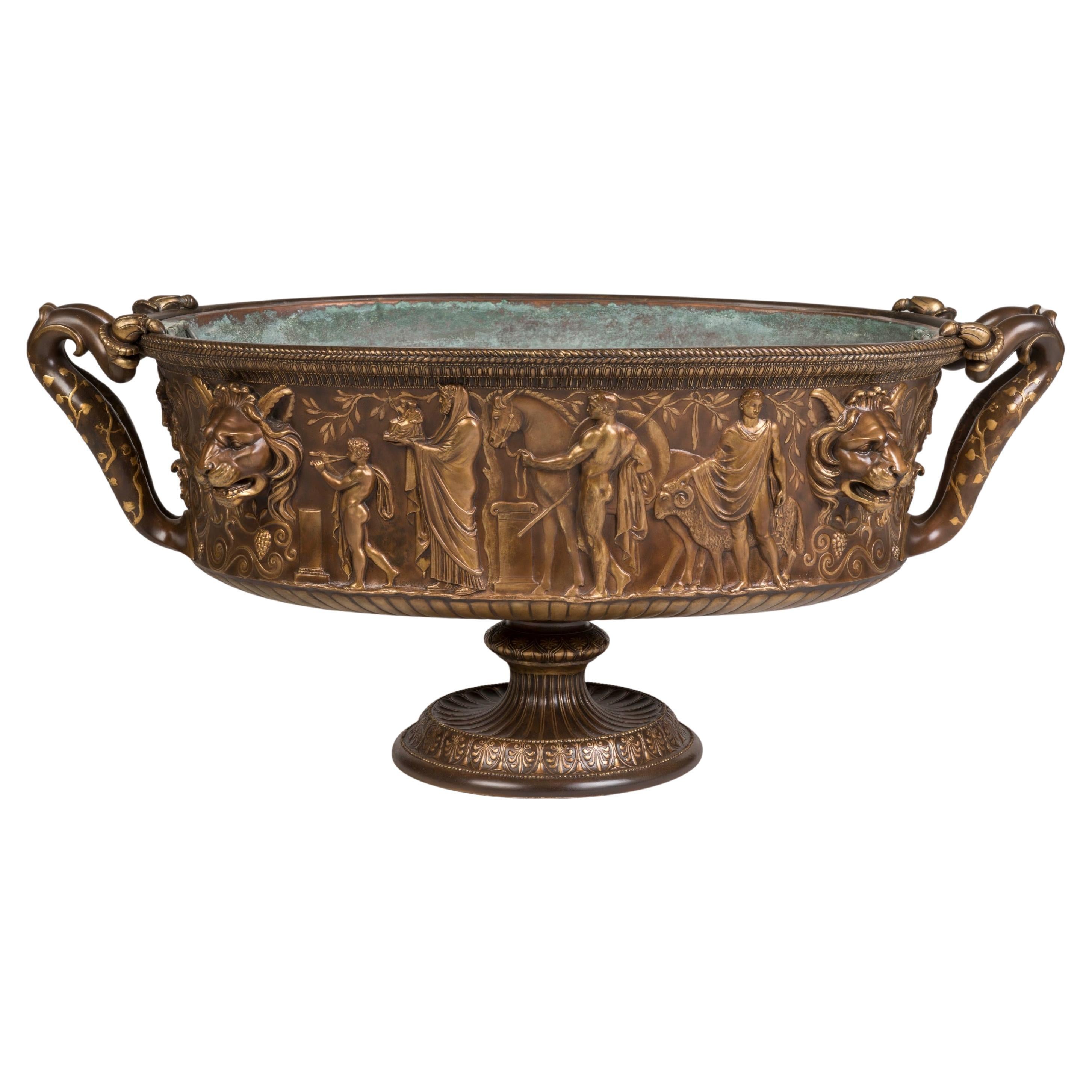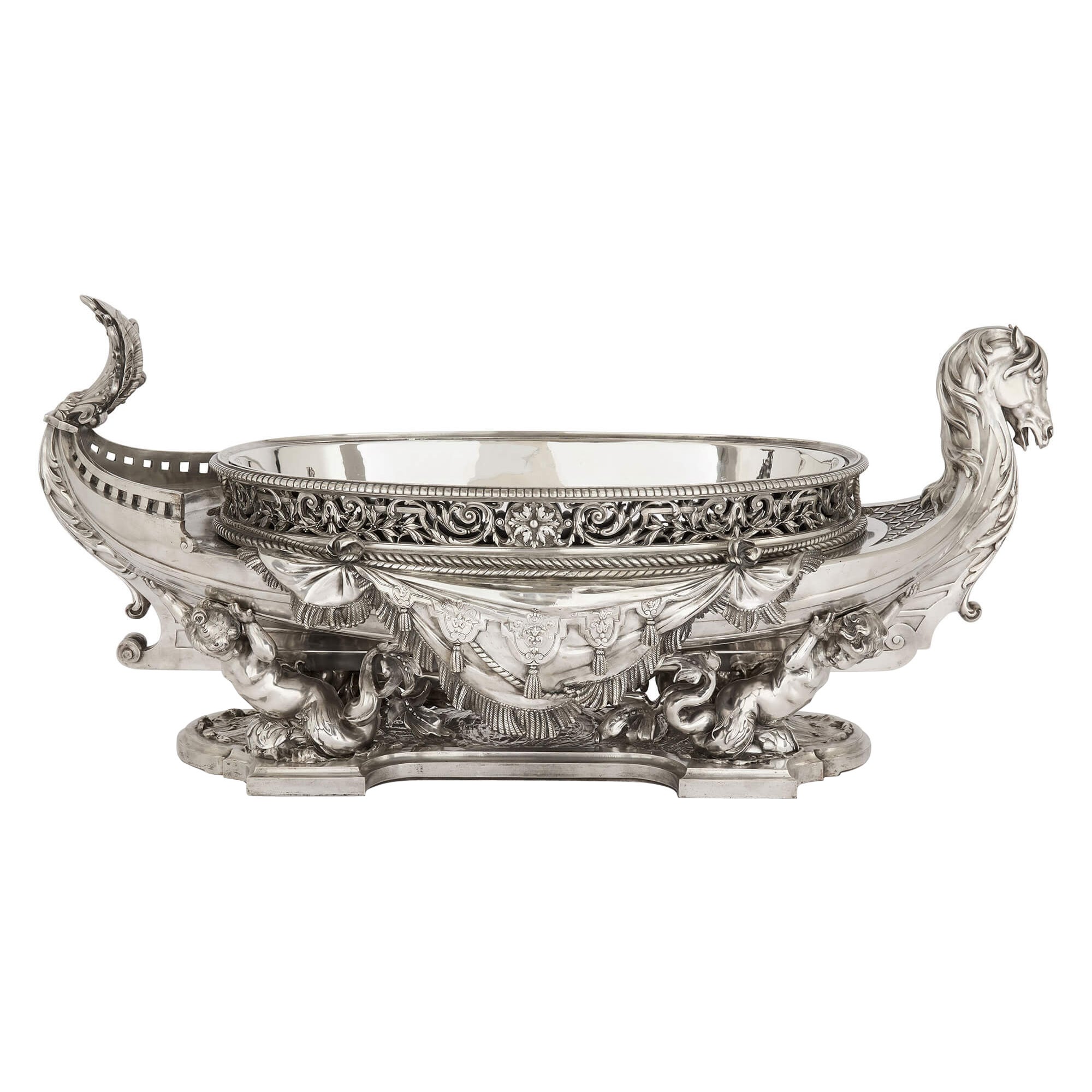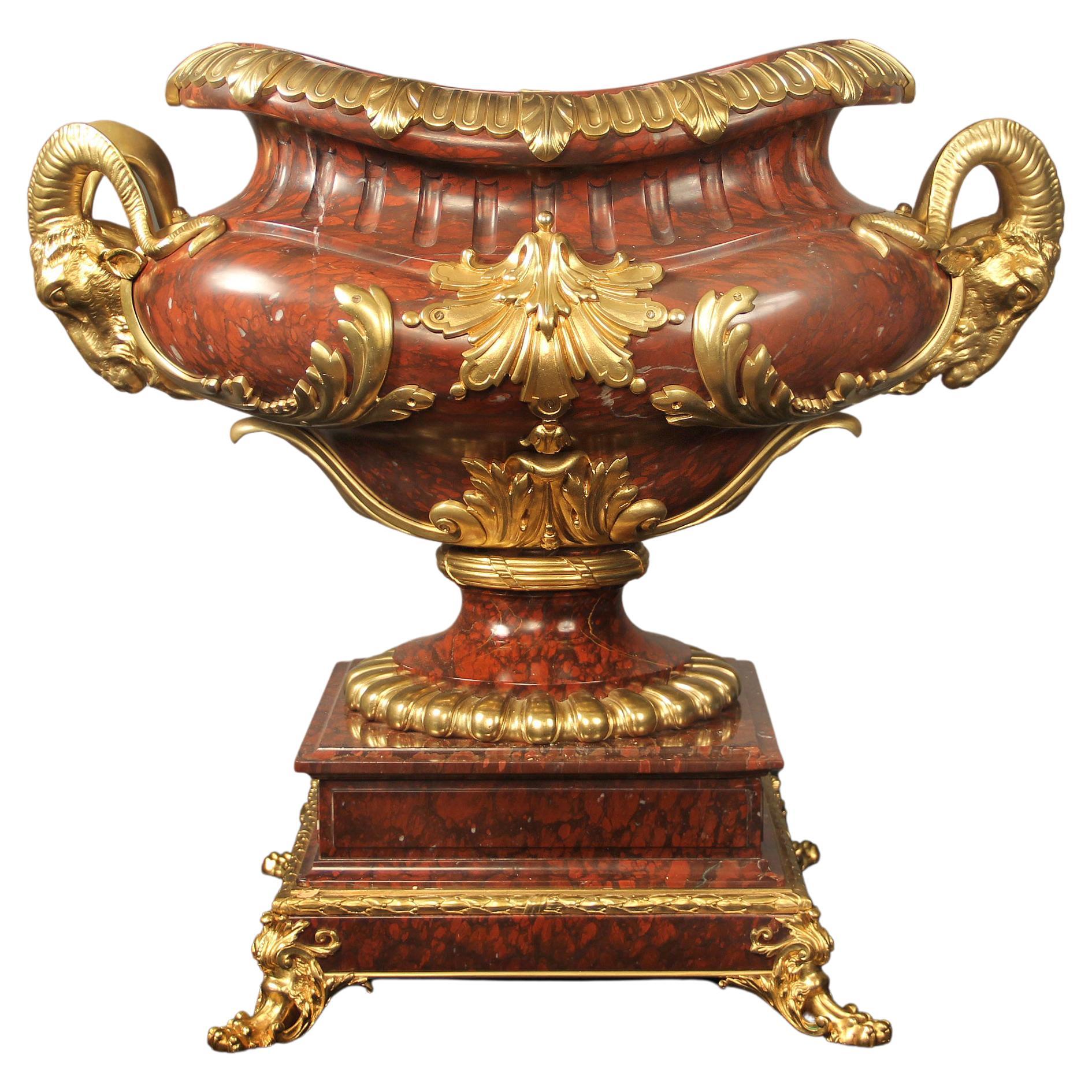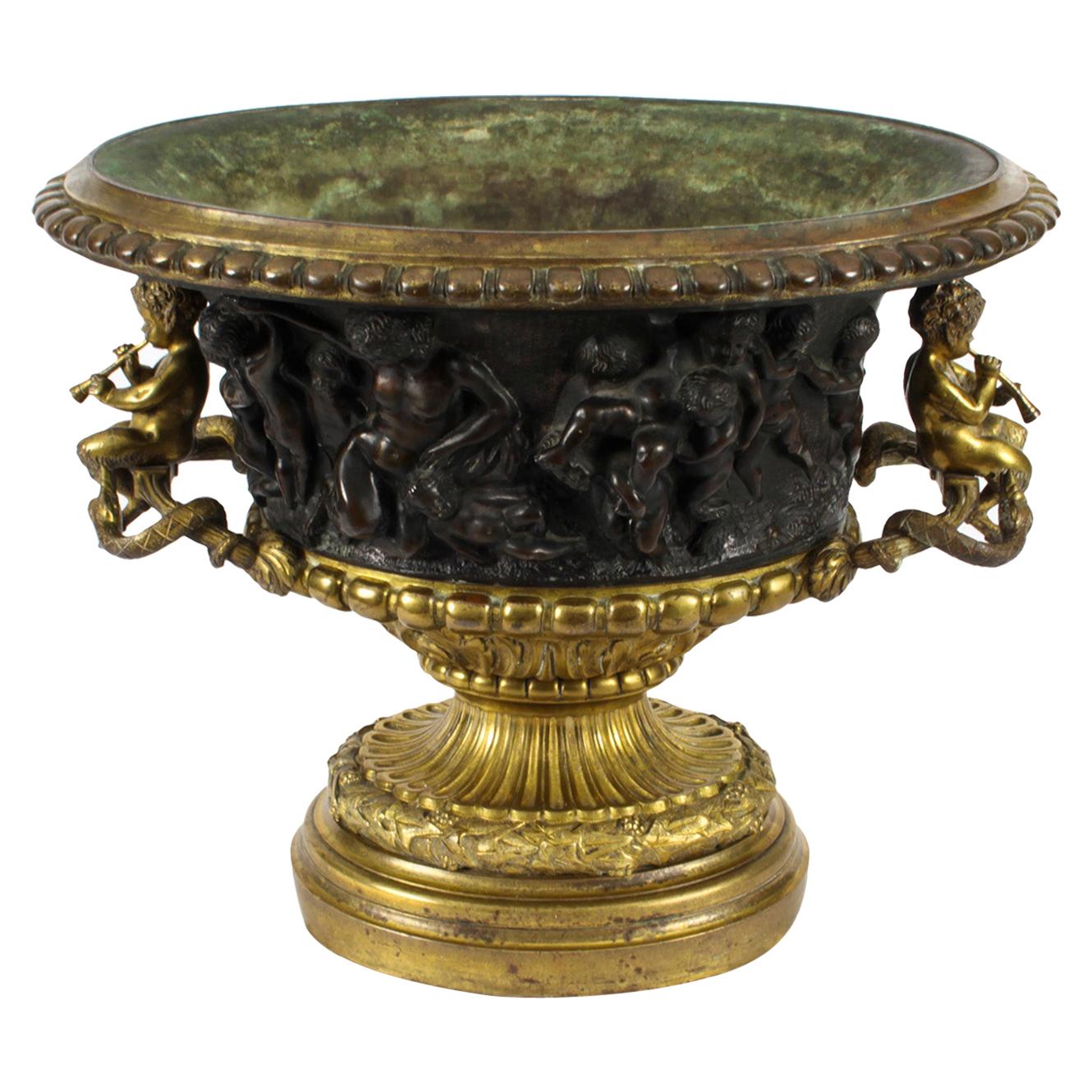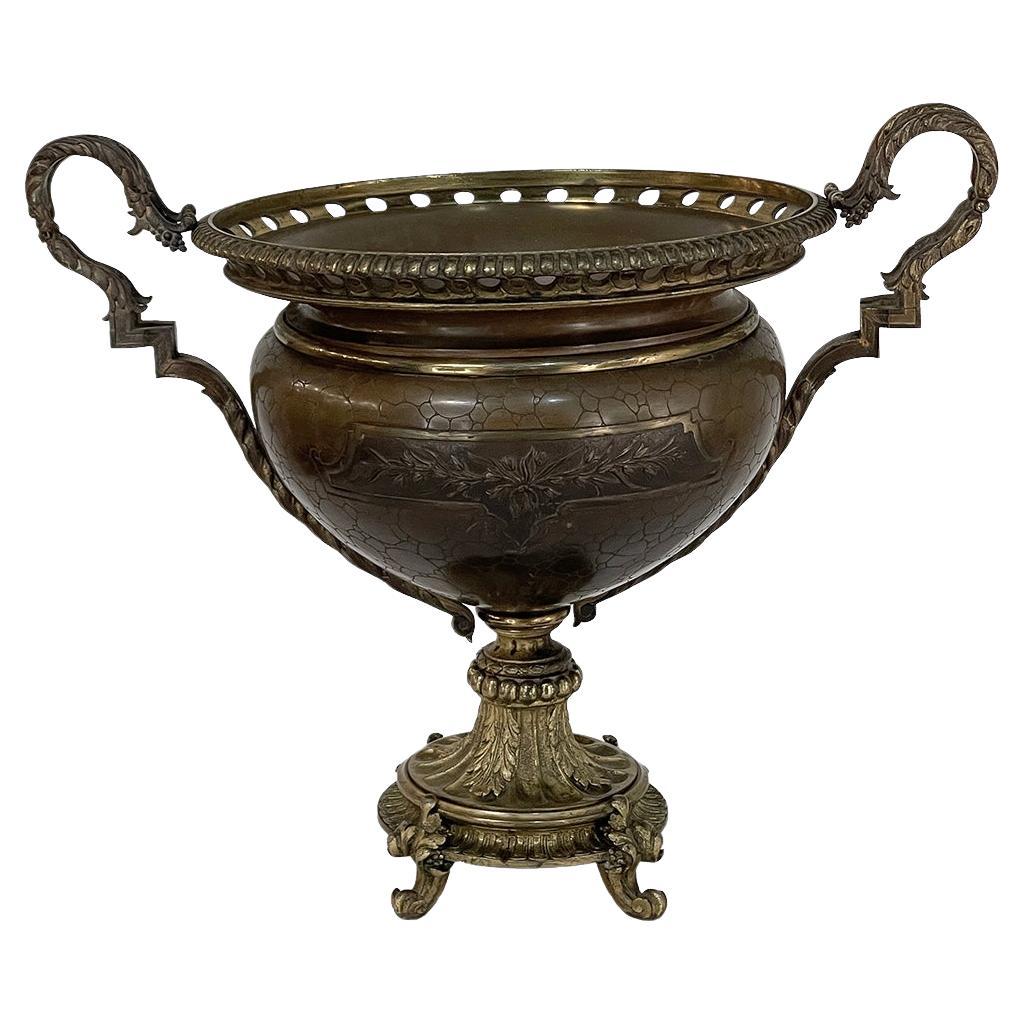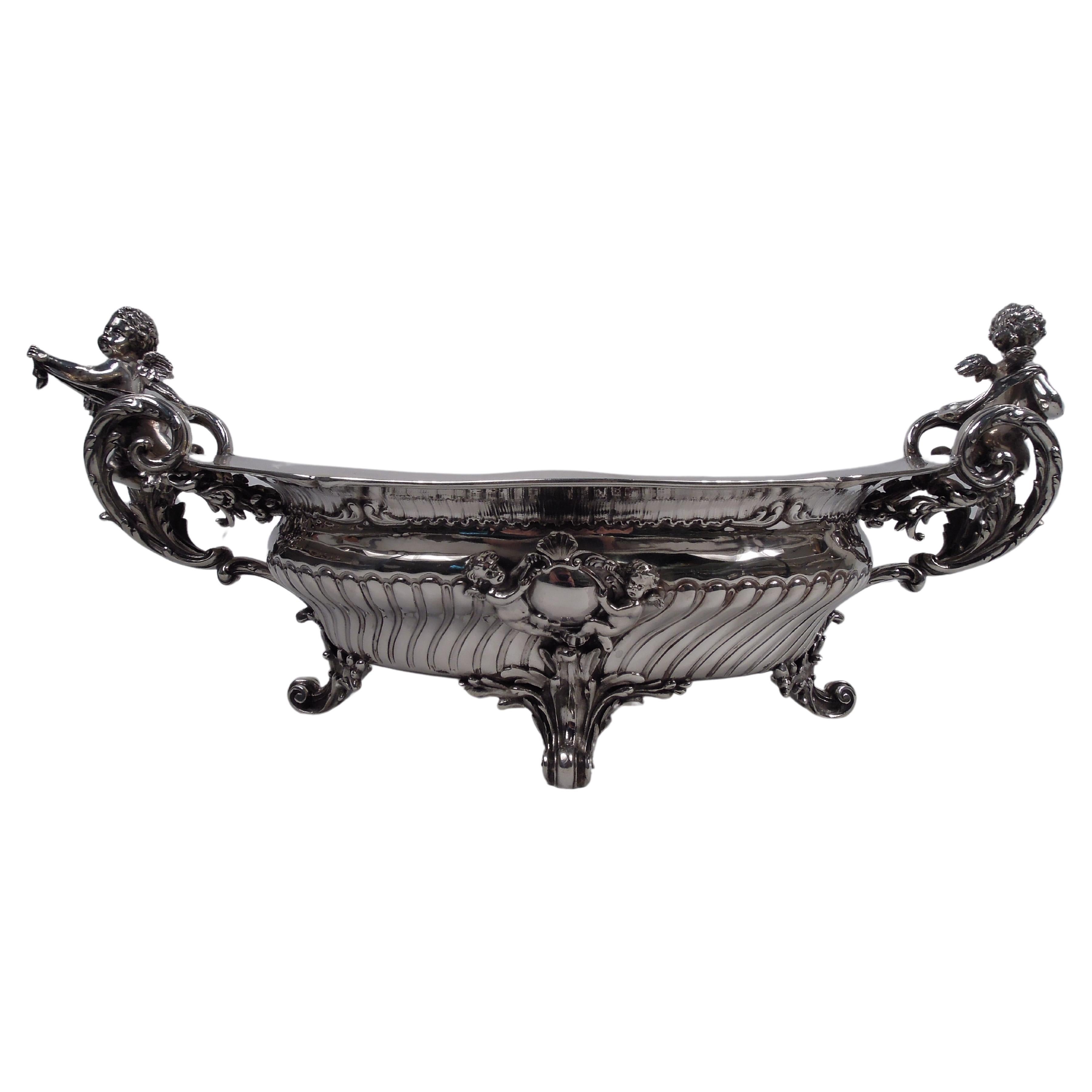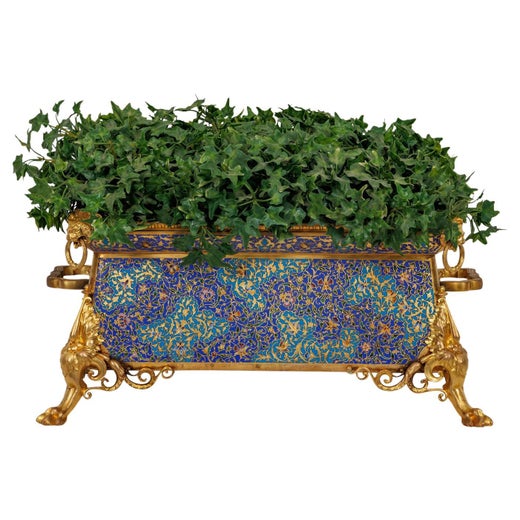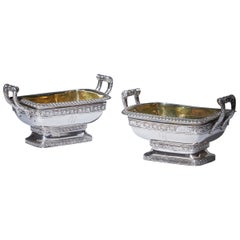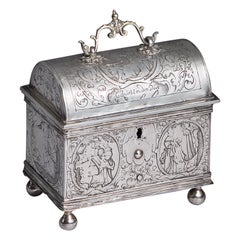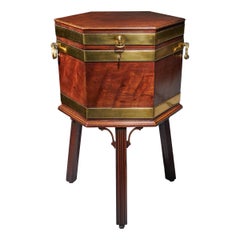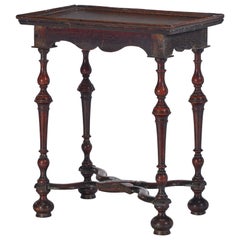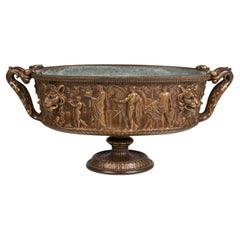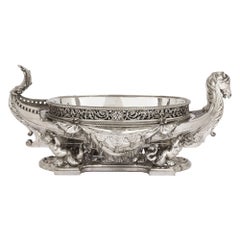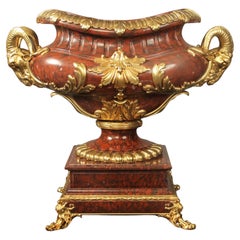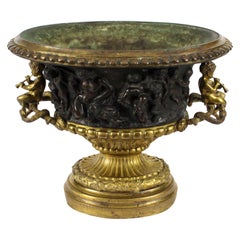19th Century Silvered Bronze Athénienne Jardinière by Ferdinand Barbedienne
Acerca del artículo
- Creador:Ferdinand Barbedienne (Creador)
- Dimensiones:Altura: 103 cm (40,56 in)Diámetro: 41,5 cm (16,34 in)
- Estilo:Grand Tour (Del período)
- Materiales y técnicas:
- Lugar de origen:
- Época:
- Fecha de fabricación:1860
- Estado:Desgaste acorde con la edad y el uso.
- Ubicación del vendedor:Oxfordshire, GB
- Número de referencia:1stDibs: LU4936227272632
Ferdinand Barbedienne
Fundada por el antiguo comerciante parisino de papel pintado Ferdinand Barbedienne y el ingeniero Achille Collas, una de las fundiciones más veneradas de la Francia del siglo XIX comenzó con la invención de un revolucionario dispositivo de la década de 1830 que podía producir reproducciones proporcionales -grandes o pequeñas- de esculturas. La máquina de Collas, que producía miniaturas de antigüedades para los interiores de los hogares de todo el mundo, fue fundamental para el éxito de la F. Fundición Barbedienne. La exitosa empresa obtuvo prestigiosos premios y elogios de la crítica y creó exquisitos candelabros de bronce , relojes y lámparas para una serie de clientes ricos y prominentes.
El dúo lanzó su empresa con el nombre de Société Collas et Barbedienne, y desde el principio optimizaron los procesos químicos para pigmentar y patinar sus estatuillas de bronce. Tras la muerte de Collas en 1859, Barbedienne siguió solo, y el nombre de la empresa pasó a ser simplemente F. Barbedienne.
Barbedienne empleaba entonces a más de 300 trabajadores, y la Maison creó una gama de muebles y objetos decorativos en los que se integraba el mármol y el ormolu . Sin embargo, con el inicio de la Guerra Franco-Prusiana de 1870, la fundición se vio obligada a reequipar sus moldes, y la producción de cañones sustituyó a la de esculturas , muebles y jarrones .
Cuando Ferdinand Barbedienne falleció en 1891, su sobrino y heredero, Gustave Leblanc, asumió la presidencia, cambiando el nombre a Leblanc-Barbedienne. Leblanc expandió la producción a Alemania, Reino Unido y Estados Unidos, continuando el legado de la empresa con esculturas monumentales y modelos, y asegurándose los derechos de producción de estatuas famosas.Paul-Alexandre Dumas, fabricante de Art Nouveau y alumno de Louis Majorelle, sucedió a Leblanc hasta el cierre de la empresa en 1952.
Las piezas de Barbedienne se expusieron con regularidad en el siglo XIX y fueron especialmente frecuentes en las exposiciones internacionales y ferias mundiales de Europa, donde recibieron numerosos premios. En la actualidad, el Museo de Orsay de París conserva en su colección docenas de obras de Barbedienne, entre ellas intrincados espejos, jarrones y copas creados por Louis-Constant Sévin en la fundición. Durante más de dos décadas, Sévin creó lámparas, cajas y mucho más en la Maison Barbedienne. Trabajando junto al galardonado perseguidor Désiré Attarge, Sévin diseñó obras de la época de Napoleón III que atraían enormemente a la nobleza europea.
Otros artistas notables que colaboraron con Barbedienne fueron Eugene Aizelin, Emmanuel Fremiet, Antonin Mercié, Emile Guillemin, Edouard Lievre, Ferdinand Levillain y Auguste Rodin.
En 1stDibs, encuentra una colección de objetos decorativos antiguos Ferdinand Barbedienne , iluminación y mucho más.
- EnvíoRecuperando presupuesto…Envío desde: Faringdon , Reino Unido
- Política de devolución
Más de este vendedor
Ver todoAntiguo, principios del siglo XIX, Inglés, Jorge IV, Vajilla
Silver
Antiguo, siglo XVII, Holandés, Barroco, Cajas decorativas
Silver
Antiguo, siglo XVIII, Inglés, Chippendale, Mesas auxiliares
Latón
Antiguo, siglo XVII, Inglés, Guillermo y María, Mesas auxiliares
Roble
Antiguo, siglo XVIII, Inglés, Estilo Adán, Relojes de mesa y relojes de ...
Latón, Acero
Antiguo, siglo XVIII, Chippendale, Candeleros
Caoba
También te puede gustar
Antiguo, siglo XIX, Francés, Jardineras, maceteros y macetas
Bronce
Antiguo, Fines del siglo XIX, Francés, Neoclásico, Jardineras y macetas
Bronce
Antiguo, siglo XIX, Francés, Belle Époque, Centros de mesa
Mármol Griotte, Bronce
Antiguo, Década de 1830, Francés, Jardineras y macetas
Bronce, Ormolú
Antiguo, Década de 1880, Europeo, Neoclásico, Jardineras y macetas
Bronce
Antiguo, Fines del siglo XIX, Francés, Renacimiento rococó, Jardineras, ...
Silver
